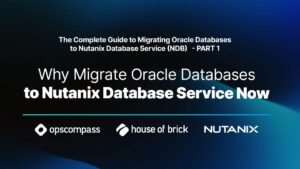Dave Welch (@OraVBCA), CTO and Chief Evangelist
Tech Target’s Beth Pariseau asked for my opinion on Oracle’s recent Nimbula purchase announcement. She then posted an article titled “Oracle’s Nimbula IaaS buy sparks open source speculation” on March 14th.
I always appreciate the opportunity to contribute to Beth’s pieces. On this occasion, I opted to give her my input in writing only. As I’ve thought about it, I think the OVM concerns that I shared with Beth are important enough that I’ve chosen to post my entire response to her. I’m posting it as-is, resisting the temptation to expound on how it relates to Oracle’s March 20 announcement of its hardware/cloud sales decline.
March 13, 2012
Beth,
It’s always great to hear from you. Quite frankly, I’m surprised I didn’t hear from you on the occasion of IBM’s announcement last week that they were committing to OpenStack. I’m inclined to believe that’s a much bigger deal than Oracle’s Nimbula announcement.
Oracle is floundering with virtualization. Oracle’s been on its Xen project for a full six years now (assuming it put at least a few months of prep into its OVM OOW 2007 announcement) and still hasn’t produced anything we consider remotely usable.
I’ve been verbal from the start about how VMware needed a technical and financial competitor on the Linux side. When Oracle announced OVM at OOW 2007, I was dearly hoping that Oracle would be that competitor. Over five years later, I’m still waiting for Oracle to step up.
Oracle announced OVM 3.0 at OOW 2011 with a lot of fanfare. Within two days, VMware blasted its partners a 15-point technical competitive analysis based solely on downloadable OVM 3.0 documentation. I thought VMware’s analysis totally missed the mark. I have maintained for years that OVM chose the wrong open source platform in Xen, and that would continue to be the case until Xen got rid of the parent partition, otherwise known as Dom0. The three Xen issues—any one of which was a bigger deal for me than anything on the OVM 3.0/vSphere partner compete sheet—were:
- Tier 1 workload I/O & network scalability: difficult to accomplish when the same device driver code has to live and function in both the base native Linux install image as well as the parent partition virtual layer.
- The parent partition is inherently anti-HA as there are lots of required Linux patches that require a full down of the environment yet have nothing to do with virtualization.
- Security analysts agree that the ultimate way to reduce a security threat at the end of the day is to reduce the size of the attack surface. The installation of the parent partition mini-Linux image on top of the base native hardware image bloats rather than reduces the attack surface.
Oracle’s long-standing Senior VP of OVM/OEL Wim Coekaerts announced in his May 2011 blog post that the parent partition (Dom0) was finally going away as of the 2.6.39+ kernel. My hopes soared. At the time, I said that we were probably still a hardware depreciation lifecycle away from getting any respectable OVM GA adoption on the street. Meanwhile, Red Hat would have to muck with it and release. Then Oracle in turn would muck with it and release.
A year later in May 2012, Wim posted that OVM 3.1 with Dom0 was finally GA. Just a month ago, House of Brick followed Oracle Consulting Services was called into a shop that was trying to take a scaled workload live within days on Oracle E-Business Suite with RAC on OVM 3.1. OCS had done its own The OVM configuration had previously been done by two third party consultancies per its Oracle’s best practices for the customer. What we found in OVM was anything other than stable or even remotely usable. We retrofitted vSphere 5.1 per the customer’s plea, and they went live with the corrected stack days later. Takeaway: a year after Wim’s May 2011 Dom0 post, I’m regretfully predicting that we’re still at least a hardware depreciation life-cycle away from OVM becoming anything usable under Tier 1 workloads.
So what’s going on at Oracle? Wim Coekaerts won my respect a decade ago with his team’s engineering and support of Oracle Cluster File System. I wonder if this has anything to do with Wim and his team’s capabilities and rather wonder if his team is the victim of resource constraints. To me, it sure looks like another indicator that Oracle’s leadership’s primary objective with OVM may have been trade rag competition. Oracle’s leadership can’t be blind to the accelerating hemorrhage of accounts optimizing their Oracle red stacks on VMware, with the associated crippling reduction on Oracle processor-based licensing revenue.
Given the choices that Oracle appears to have made to-date and its current in-the-mire status with OVM, I think that for Oracle to bag Xen and go with OpenStack would have to be an improvement for two reasons:
- Anything would be better than current state OVM.
- Any other corporate entity overseeing design and development of the hypervisor and surrounding tooling would be an improvement.
I wouldn’t be at all surprised if Oracle went there.
Regards,
Dave
October 22, 2013 errata: in recent conversation with one of the customer’s technical leads, House of Brick came to understand that our engagement lead had misunderstood that Oracle Consulting Services had done the OVM integration. We regret the error.






